Key Takeaways
1. Antimatter: The Mirror Image of Matter
Antimatter is a weird topsy-turvy shadow of matter, like twee-dledum to our tweedledee, where left becomes right and positive turns into negative.
Fundamental counterpart. Antimatter is the perfect opposite of ordinary matter, with identical properties except for reversed electric charges. For every particle of matter, there exists an antiparticle of antimatter:
- Electron (negative charge) → Positron (positive charge)
- Proton (positive charge) → Antiproton (negative charge)
- Neutron (neutral) → Antineutron (neutral, but reversed internal structure)
Dirac's prediction. In 1928, physicist Paul Dirac's equation combining quantum mechanics and special relativity predicted the existence of antimatter. This theoretical breakthrough laid the foundation for our understanding of antimatter and its relationship to matter.
2. The Discovery of Positrons and Antiprotons
Anderson had been confident enough to go public with his tentative result in 1932, Millikan's scepticism notwithstanding, following up on the picture in Science News Letter in the preceding December. Fortune favours the brave.
Positron discovery. Carl Anderson discovered the positron in 1932 while studying cosmic rays using a cloud chamber. He observed tracks that curved in the opposite direction to electrons, indicating a positively charged particle with the same mass as an electron.
Antiproton confirmation. The antiproton was discovered in 1955 by Emilio Segrè and Owen Chamberlain at the University of California, Berkeley, using a particle accelerator. This discovery:
- Confirmed Dirac's prediction of antimatter
- Earned Segrè and Chamberlain the 1959 Nobel Prize in Physics
- Opened up new avenues for particle physics research
3. Annihilation: When Matter Meets Antimatter
Antimatter destroys any matter that it touches in a pyrotechnic flash, an explosive release of all the energy that had been locked within for billions of years.
Energy release. When matter and antimatter particles collide, they annihilate each other, converting their entire mass into energy according to Einstein's famous equation E=mc². This process releases an enormous amount of energy:
- 1 gram of antimatter + 1 gram of matter = 43 kilotons of TNT equivalent
- Comparable to the atomic bomb dropped on Hiroshima
Annihilation products. The result of matter-antimatter annihilation depends on the particles involved:
- Electron-positron: Produces gamma rays
- Proton-antiproton: Produces pions, which then decay into other particles and radiation
This process is significant for understanding the early universe and has potential applications in medical imaging and future energy technologies.
4. Storing Antimatter: Challenges and Breakthroughs
To give some idea of how small atoms are, look at the dot at the end of this sentence; it contains some 100 billion atoms of carbon, a number far larger than all humans who have ever lived.
Storage hurdles. Storing antimatter is incredibly challenging due to its tendency to annihilate with ordinary matter. Scientists have developed ingenious methods to overcome this:
- Penning traps: Use electromagnetic fields to suspend charged antiparticles in a vacuum
- Antiproton Decelerator (AD) at CERN: Slows down antiprotons for experiments
- Antihydrogen atoms: Neutral antimatter atoms created by combining antiprotons and positrons
Milestones in antimatter storage:
- 1995: First antihydrogen atoms created at CERN
- 2002: Large numbers of antihydrogen atoms produced
- 2010: Antihydrogen trapped for 1/10th of a second
- 2011: Antihydrogen trapped for over 16 minutes
These advancements have enabled more detailed studies of antimatter properties and comparisons with ordinary matter.
5. The Asymmetry Between Matter and Antimatter
K turned into K slightly faster than the reverse process. This proves that there is an intrinsic direction to time's arrow even at the level of the basic particles as you could tell which way a movie of the anti- K to K oscillation was playing.
CP violation. In 1964, James Cronin and Val Fitch discovered that certain particles called neutral kaons exhibit a slight asymmetry in their behavior compared to their antiparticles. This phenomenon, known as CP violation, demonstrates that the laws of physics are not perfectly symmetrical between matter and antimatter.
Implications. This asymmetry has profound consequences:
- It provides a potential explanation for the matter-antimatter imbalance in the universe
- It challenges our understanding of fundamental physics
- It suggests that time may have a preferred direction at the particle level
Recent experiments with B mesons have shown even larger asymmetries, further supporting the idea that matter and antimatter are not perfect mirror images of each other.
6. The Mystery of the Missing Antimatter in the Universe
The mystery is less about why antimatter has disappeared, and more a question of why has matter survived?
Cosmic imbalance. The Big Bang theory suggests that equal amounts of matter and antimatter should have been created at the beginning of the universe. However, observations show that our universe is dominated by matter, with very little antimatter present.
Possible explanations:
- Baryogenesis: A process in the early universe that created a slight excess of matter over antimatter
- CP violation: The observed asymmetry in particle behavior could have led to the matter dominance
- Leptogenesis: Neutrinos may have played a role in creating the matter-antimatter imbalance
Ongoing research. Scientists are conducting experiments to:
- Measure antimatter properties with high precision
- Search for primordial antimatter in cosmic rays
- Investigate neutrino properties and their potential role in the early universe
Understanding this cosmic asymmetry remains one of the biggest unsolved problems in physics and cosmology.
7. Antimatter in Fiction vs. Reality: Debunking Myths
These 'facts' are at best misleading and even wrong, but the popularity of Brown's novel has caused many to believe them to be true.
Common misconceptions. Popular fiction and media often portray antimatter inaccurately, leading to widespread myths:
- Antimatter as an unlimited energy source
- Antimatter bombs as clean, radiation-free weapons
- Large-scale antimatter production and storage
Reality check:
- Producing antimatter requires more energy than it releases
- Antimatter annihilation produces intense gamma radiation
- Current antimatter production is extremely limited and expensive
- Storing large amounts of antimatter is beyond current technology
Scientific applications. While not suitable for energy production or weapons, antimatter has valuable scientific and medical uses:
- Positron Emission Tomography (PET) scans in medical imaging
- Studying fundamental physics and the early universe
- Potential future applications in spacecraft propulsion (theoretical)
It's crucial to distinguish between science fiction and the actual state of antimatter research to appreciate its true significance and potential.
Last updated:
FAQ
What is "Antimatter" by Frank Close about?
- Comprehensive exploration of antimatter: The book provides a thorough overview of antimatter, its scientific discovery, properties, and significance in both science and popular culture.
- Fact vs. fiction: Frank Close addresses common misconceptions and myths about antimatter, especially those popularized by media and fiction, and contrasts them with scientific reality.
- Historical and scientific journey: The narrative traces the history of antimatter from theoretical prediction to experimental discovery, including key figures like Paul Dirac and Carl Anderson.
- Implications and applications: The book discusses the potential uses of antimatter in medicine, energy, and weaponry, as well as its role in understanding the universe.
Why should I read "Antimatter" by Frank Close?
- Clarifies misconceptions: The book debunks widespread myths about antimatter, especially those stemming from science fiction and sensational media reports.
- Accessible science writing: Frank Close explains complex physics concepts in a way that is approachable for non-specialists, making it suitable for general readers interested in science.
- Historical context: Readers gain insight into the personalities, experiments, and theoretical breakthroughs that shaped our understanding of antimatter.
- Relevance to current debates: The book addresses contemporary issues such as antimatter weapons, energy production, and the search for antimatter in the universe.
What are the key takeaways from "Antimatter" by Frank Close?
- Antimatter is real but rare: Antimatter exists and has been created in laboratories, but it is extremely scarce in the observable universe.
- Matter-antimatter asymmetry: The universe is dominated by matter, and the reasons for the disappearance of antimatter after the Big Bang remain one of science’s great mysteries.
- Practical uses are limited: While antimatter has applications in medical imaging (PET scans), its use as a power source or weapon is currently impractical due to production and storage challenges.
- Science vs. fiction: Many popular ideas about antimatter, such as its use in bombs or as a limitless energy source, are exaggerated or incorrect.
How does "Antimatter" by Frank Close define and explain antimatter?
- Mirror image of matter: Antimatter consists of particles that are identical to their matter counterparts except for opposite electric charge and certain quantum properties.
- Annihilation with matter: When antimatter meets matter, they annihilate each other, releasing energy in the form of gamma rays.
- Predicted by theory: The existence of antimatter was first predicted by Paul Dirac’s equations, which required the existence of particles with negative energy solutions.
- Examples of antimatter: The positron (antielectron) was the first antiparticle discovered, followed by antiprotons, antineutrons, and more complex anti-atoms.
What is the history of antimatter’s discovery according to "Antimatter" by Frank Close?
- Dirac’s prediction (1928): Paul Dirac’s theoretical work predicted the existence of antimatter, specifically the positron.
- Experimental confirmation (1932): Carl Anderson discovered the positron in cosmic rays, confirming Dirac’s theory.
- Subsequent discoveries: The antiproton and antineutron were discovered in the 1950s, and later, anti-atoms like antihydrogen were created in laboratories.
- Role of cosmic rays and accelerators: Early discoveries relied on cosmic ray observations and cloud chambers, while modern research uses particle accelerators.
How does "Antimatter" by Frank Close address the matter-antimatter asymmetry in the universe?
- Big Bang production: The book explains that the Big Bang should have produced equal amounts of matter and antimatter.
- Great Annihilation: Shortly after the Big Bang, matter and antimatter annihilated, leaving a small excess of matter that makes up the observable universe.
- Unsolved mystery: The reason for this asymmetry is still unknown, though subtle differences in particle behavior (CP violation) have been observed.
- Current research: The book discusses ongoing experiments and theories, such as the role of neutrinos and majorons, in explaining the imbalance.
What are the real-world applications of antimatter discussed in "Antimatter" by Frank Close?
- Medical imaging: Positron Emission Tomography (PET) scans use positrons to detect metabolic activity in the body, aiding in diagnostics.
- Scientific research: Antimatter is used in high-energy physics experiments to probe the fundamental laws of nature and recreate early universe conditions.
- Material science: Positron annihilation techniques help detect defects in materials, such as metal fatigue in aircraft components.
- Limitations: The book emphasizes that large-scale energy production or weaponization of antimatter is not currently feasible.
How does "Antimatter" by Frank Close separate fact from fiction regarding antimatter weapons and energy?
- Impractical as a weapon: The book explains that producing and storing enough antimatter for a bomb is far beyond current technology and would require immense resources.
- Energy inefficiency: Creating antimatter consumes much more energy than can be recovered from its annihilation, making it an inefficient power source.
- Media and military hype: Reports of antimatter weapons are often based on misunderstandings or speculative research, not practical reality.
- Science fiction influence: Popular works like Dan Brown’s "Angels and Demons" have fueled misconceptions about antimatter’s dangers and potential.
What scientific concepts and theories are central to "Antimatter" by Frank Close?
- Quantum mechanics and relativity: The book explains how the combination of these theories led to the prediction of antimatter.
- Dirac’s equation and negative energy: Dirac’s mathematical framework required the existence of antiparticles.
- Particle-antiparticle annihilation: The process by which matter and antimatter convert their mass into energy.
- CP violation and symmetry: The book discusses how small asymmetries in particle behavior may explain the dominance of matter.
How is antimatter produced, stored, and studied according to "Antimatter" by Frank Close?
- Production in accelerators: Antimatter is created by high-energy collisions in particle accelerators, producing antiparticles like positrons and antiprotons.
- Storage challenges: Antimatter must be kept from contacting matter, typically using magnetic and electric fields in devices like Penning traps.
- Antihydrogen creation: Laboratories like CERN have succeeded in creating and briefly storing antihydrogen atoms.
- Experimental limitations: Only minute quantities of antimatter have been produced and stored, far from the amounts needed for practical applications.
What are the most important quotes from "Antimatter" by Frank Close and what do they mean?
- “Antimatter is truly anti-matter.” – Emphasizes the fundamental opposition between matter and antimatter, leading to mutual annihilation.
- “The universe is built from basic particles, trapped in a never ending terpsichore by the natural forces…” – Highlights the dynamic, dance-like interplay of particles and forces in the cosmos.
- “The mystery is less about why antimatter has disappeared, and more a question of why has matter survived?” – Points to the central scientific puzzle of why the universe is made of matter.
- “With such inspirations in fact, who needs fiction?” – Suggests that the real science of antimatter is as fascinating as, or more so than, its fictional portrayals.
What is the significance of Paul Dirac’s work as presented in "Antimatter" by Frank Close?
- Theoretical prediction: Dirac’s equations predicted the existence of antimatter before it was observed, a major triumph of theoretical physics.
- Negative energy solutions: His work introduced the concept of negative energy states, leading to the idea of the “Dirac sea” and antiparticles.
- Symmetry in nature: Dirac’s theory revealed a deep symmetry between matter and antimatter, influencing later developments in particle physics.
- Legacy: The book credits Dirac’s insights as foundational to our understanding of the universe and the ongoing search for answers about matter’s dominance.
Review Summary
Antimatter by Frank Close receives generally positive reviews for its accessible explanation of complex physics concepts. Readers appreciate the clear language, engaging narrative, and debunking of myths. Some find certain sections challenging, but most commend the book's concise nature and ability to simplify difficult topics. The historical context and real-world applications of antimatter are highlighted as interesting aspects. While a few reviewers note that parts of the book may be difficult for laypeople, overall it is praised as an informative introduction to the subject.
Similar Books


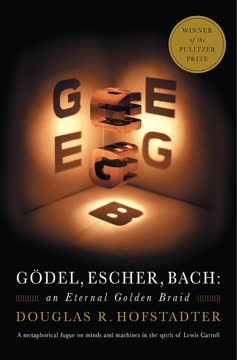
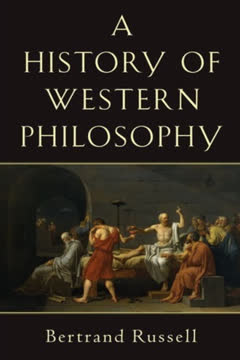

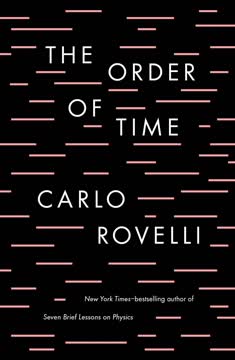

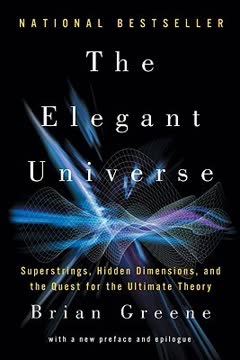
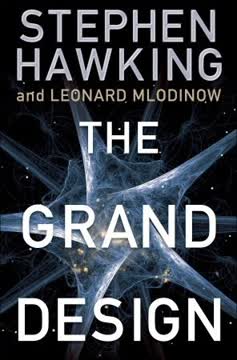
Download PDF
Download EPUB
.epub digital book format is ideal for reading ebooks on phones, tablets, and e-readers.





